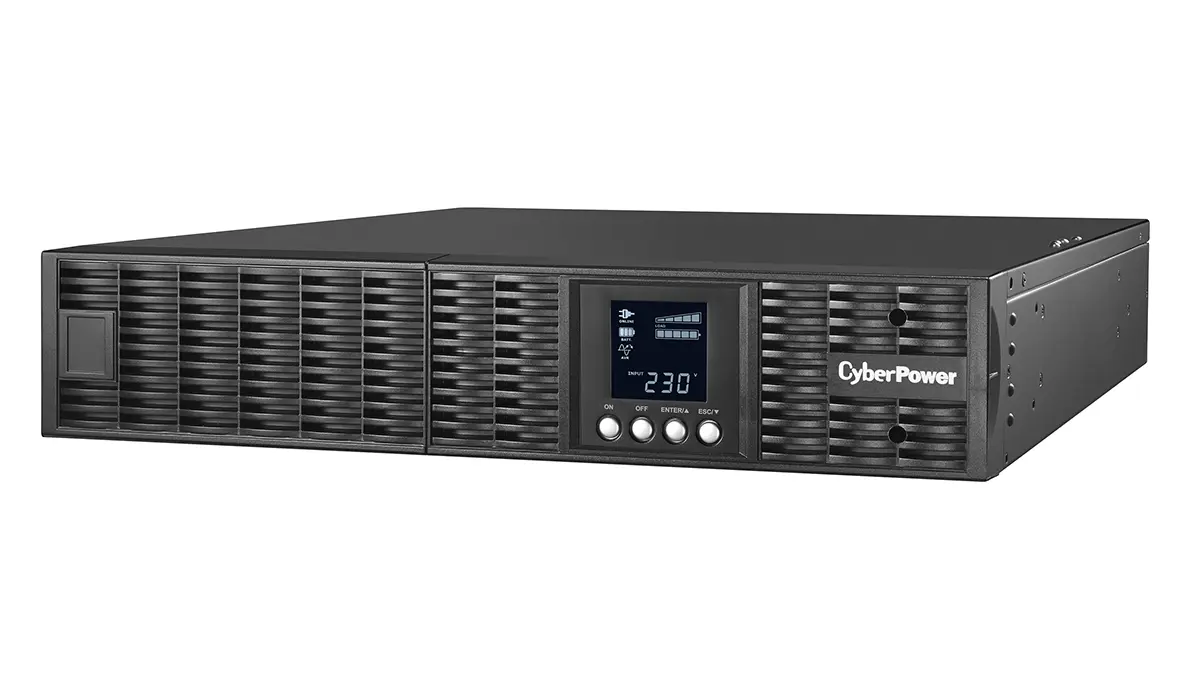
Hands-on Review: CyberPower OLS1000ERT2UA UPS
The CyberPower OLS1000ERT2UA is a versatile uninterruptable power supply that can be rack-mounted or free-standing.
Opening the Cyberpower UPS, I did feel like this was perhaps a little above my pay grade. Sure, I'm used to PCs in various stages of construction littering my office making it look like an IT department, but this thing looked next level. For starters, it seemed like the UPS needed to be installed in a server rack. A quick gander through the user manual revealed that, whilst it is more than happy to look after important and mission-critical corporate IT hardware, it is a very capable UPS for home office use.
With home working still being the norm for many people, robust access to the Internet and a power supply is a no-brainer. Whilst your laptop has a battery, your modem and/or router do not. And if you are using a desktop PC, I assure you, it won't be impressed if the power goes out. I spend a lot of time switching between PCs, laptops and game consoles for reviews and writeups. Game consoles, in particular, do not like the power just getting disconnected. If the power goes out, it's game over (in some cases, quite literally). A UPS is designed to give users enough time to safely save what they are doing and shut devices down rather than experience a sometimes damaging loss of power.
The back of the Cyberpower UPS has eight 10A DC IEC 13 (kettle lead) outputs. The pack comes with one IEC DC input cable and two IEC 13/14 cables for connecting to your PC or other equipment. You can get IEC 13 to 3-pin adapters for devices such as game consoles, which will work fine.
The kit comes with all the fixing rails required to slide the Cyberpower UPS into a server rack horizontally. The kit also includes two feet that can be affixed for a vertical tower configuration. Unscrewing the plate surrounding the LCD front panel allows you to easily turn the display for the vertical setup.
As well as providing an uninterrupted power supply the Cyberpower UPS also protects equipment from overloads and power surges. This includes RJ11 (phone) and RJ45 (Ethernet) connections, the device having one in and one out for both.
The package includes a USB 2.0 cable that can be used to connect the UPS to a PC. Cyberpower's PowerPanel Personal Windows software can be used to monitor the UPS and automate shutdowns in the event of a loss of power.
Switching on the UPS immediately delivered power to my test PC. The unit is set for 230 volts by default and devices will still run at this voltage. The UPS can be set to deliver 208V, 220V,230V or 240V from the front panel. The unit will autosense the frequency of 50Hz/60Hz but can be manually configured to within 0.5Hz.
The UPS worked for me out of the box. The manual has comprehensive instructions for the more advanced features. The LCD screen, whilst clear in providing information on the unit's status, is a bit limited when it comes to adjusting settings. The device uses a menu code system that requires the manual to decipher exactly what you are changing, which is a bit fiddly.
The UPS has a capacity of 1000 VA /900 Watts. With the average PC and games console drawing around 200W, you can plug in a few devices. A gaming PC could, however, take up half the UPS's capacity.
The included battery has a recharge time of 4 hours. A UPS is designed to give you enough time to properly shut down rather than provide a battery backup. That's not to say you can't use it as such if you are only drawing a small amount of power from the unit. At full load, expect only just under 5 minutes and a half load just under 14 minutes. My desktop PC continued to work for about twenty minutes on battery up until I started a game. As soon as the game started, the UPS sounded an alarm warning me that there was only one minute of battery left, so don't expect to be playing games when the power is off.
The battery is a sealed unit (RBP0156) that can easily be replaced. This gives the unit a bit of longevity. As well as the onboard battery, optional additional Cyberpower battery modules (BPSE24V40ART2U) can be daisy-chained from the UPS.
Whilst unable (and unwilling) to simulate a power surge, pulling the power to the UPS instantaneously switches the output to the battery without any effect on the connected equipment. My PC and Xbox Series X continued as if nothing had happened. I did notice a fizzing noise when on battery, which I would say was a coil whine from the capacitors.
If the UPS detects an electrical overload between 105-110%, you will get a warning. A 110%-120% overload gives you a warning and then transfers output to the battery after 60 seconds. A 120% power surge transfers to the battery immediately.
At AU$800 the UPS isn't cheap, but nor is your equipment. It is worth noting that it is not a battery backup but could be used with one, with the PowerPanel Personal automatically shutting down your PC should an extended outage be beyond the range of your battery. It is worth considering if you are accessing mission-critical data, allowing you to save what you are doing and safely shut down your machine in case of a power cut.
Cyberpower OLS1000ERT2UA is an easy-to-use UPS that takes up very little space in the tower configuration. This is likely the only UPS that you'll ever need to buy for your home office setup.


